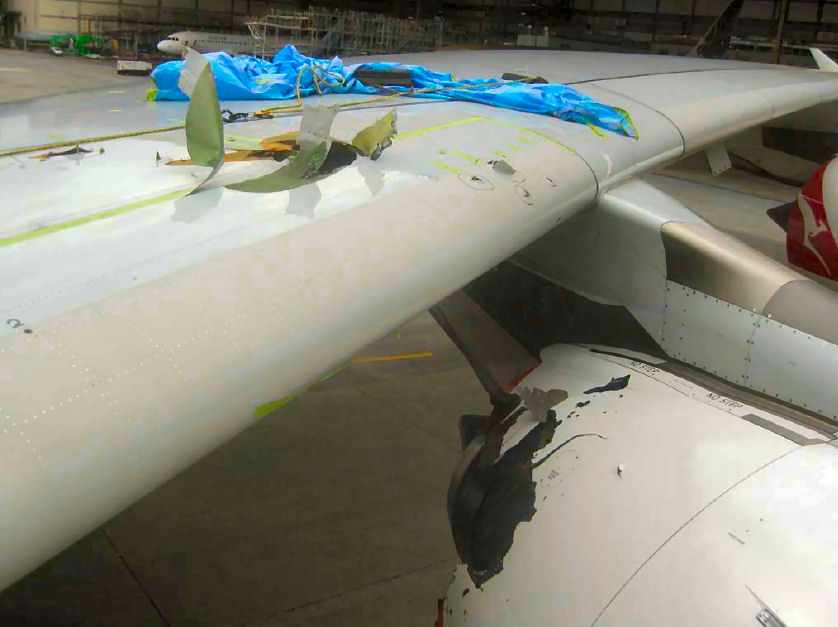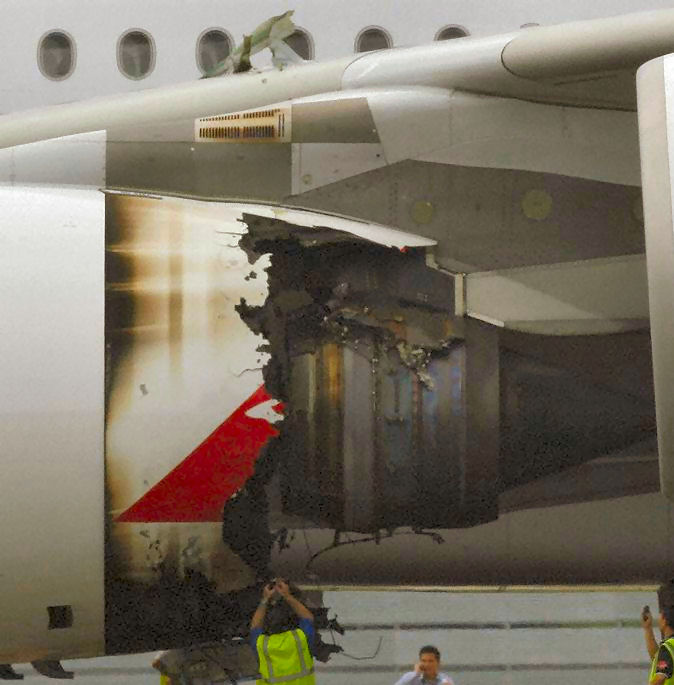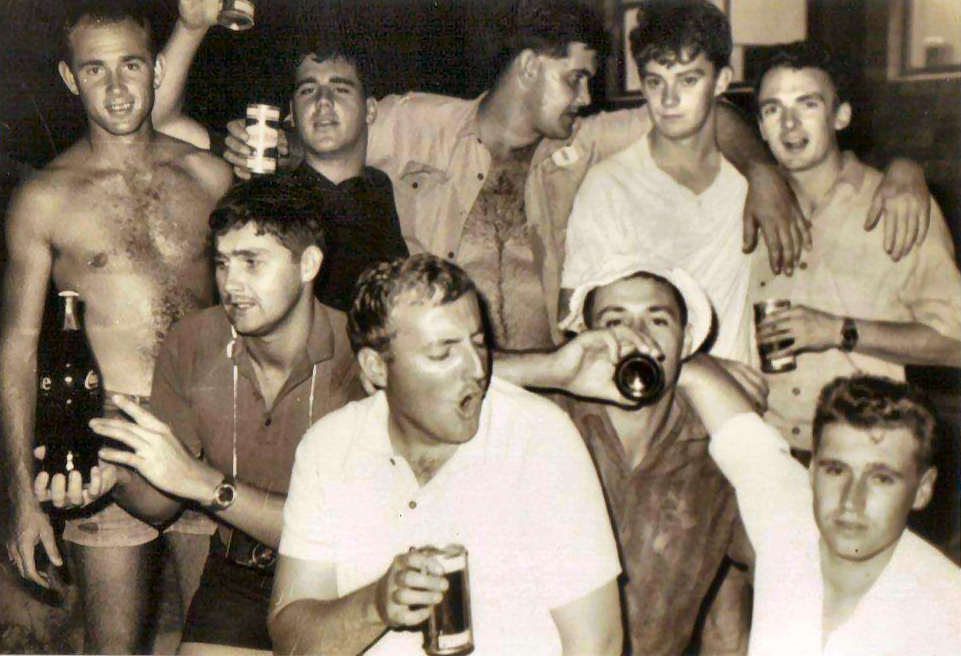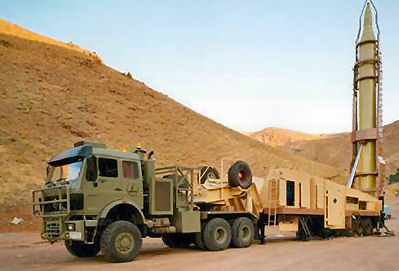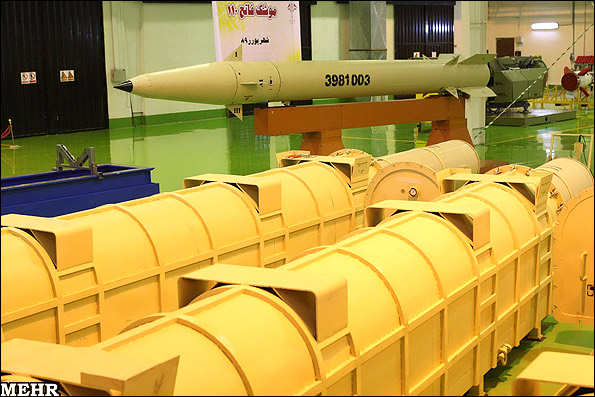|
Radschool Association Magazine - Vol 33 Page 14 |
|||||
|
Privacy Policy | Editorial Policy | Join the Association | List of Members | Contact us | Index | Links | Print this page |
|||||
|
|
|||||
|
The National Radio Fest.
Over the
weekend, 18-19 September, the
Historical Radio Society of Australia
(HRSA)
held a radio/phono festival at the Kamberra Wine Tourism complex
in Canberra, ACT (below). The show is a bi-annual event
Previously known as the National Radio and Phono Fest, it is the largest regular event in the Aussie radio calendar and is where radio buffs meet to swap tall stories, show off their bits and pieces and buy and sell radio stuff that is not normally found at Dick Smith.
The HRSA (inc.) was formed in 1982 by a group of enthusiasts committed to the preservation of Australia's radio heritage. From its origins in Victoria, it has become a nationwide organisation of over 1,000 members, with affiliated groups all around Australia.
Members of the HRSA come from all walks of life, but are united by a common interest in radio. There are a number of informal "special interest" groups within the organisation, concentrating on particular facets of the hobby.
Some of these are:
|
|||||
The HRSA holds regular meetings at a number of locations around
Australia. Meeting activities include radio displays, auctions,
technical discussion and a buy/sell trade in radio components and
visitors are most welcome to attend.
At the recent September Festival in Canberra there was a wide range of
items, including the earliest Marconi equipment, crystal sets, valve
radios, military radio equipment, old telephone equipment and
phonographs.
On the Saturday night there was a dinner for the exhibitors, who, apart from being spoiled with excellent food and wine, were entertained by the venerable George Barlin who spoke about the early days of radio. George was the first and only employee of Radio Station 2CA back in 1933 and later became its manager. Along with Arthur Shakespeare he applied for and obtained Canberra's first TV licence in the 1950s. He made a top impression on everyone present and at 94, gave them something to aspire to. His stories of broadcasting from a lonely tin shed, his link to the Petrov affair, and the story behind the Prime Minister's broadcasts were captivating.
The radio market opened at 9:00am on the Sunday and many members had booked selling tables. Over 600 visitors come to the show and some of the items which members had for sale can be found HERE.
|
|||||
|
|
|||||
|
Ian Johnston had a table at the Festival and here he shows off his Marconi style equipment, some of which he built.
|
|||||
|
|
|||||
|
Click on the photos below for a description and a hi-res view.
|
|||||
|
|
|
|
|||
|
|
|||||
|
|
|||||
|
The next event, in two years’ time, will be held in Melbourne to celebrate the 30th Anniversary of the HRSA. If you have an interest in this fascinating hobby, why not join?? The HRSA is always looking for new members. The annual membership fee is $35 for Australian residents and $49 for overseas applicants. If you would like to join, you can do so HERE.
The membership year runs from 1st July.
|
|||||
|
Murphy's Technology Law #1: Logic is a systematic method of coming to the wrong conclusion with confidence.
|
|||||
|
Simple home remedies that work.
|
|||||
|
|
|||||
|
Hard Landing.
On August 26, 2010, at 1251 Pacific daylight time, an Airbus A320, operated by JetBlue Airways Corporation, a low cost airline, landed at Sacramento International Airport, California. During touchdown on runway 16R, the airplane rapidly decelerated, the main landing gear tires blew out, and a minor tire-related fire erupted. All of the occupants in the airplane evacuated via the emergency egress cabin door slides. The airplane sustained minor damage and 7 of the 86 passengers received minor injuries during the evacuation process. None of the 2 pilots or 3 flight attendants was injured. Visual meteorological conditions (VMC) prevailed at the time.
According to the flight crew, the flight and approach to runway 16R were normal. Neither pilot recalled any abnormal indications or warnings associated with the braking system prior to landing. The first officer was the flying pilot. On touchdown, the airplane began a rapid deceleration, and the first officer remarked to the captain that it felt like a main landing gear tire blew out.
About this time, surface movement controllers reported observing sparks and smoke in the area of the main landing gear. The captain took control of the airplane. He maintained directional control and the airplane came to a stop about 2,000 feet from the touchdown point. The captain directed the first officer to initiate the ground evacuation Quick Reference Checklist up to the evacuation decision point. At that time, controllers confirmed smoke and fire was still visible around the main landing gear. Based on this information the captain elected to evacuate the airplane.
Crash fire rescue personnel and equipment responded to the airplane, which had stopped on the runway. According to the flight crew and flight attendants, a swift and orderly evacuation was performed via emergency evacuation slides at the doors.
The
airplane was subsequently examined by the operator and Federal Aviation
Administration (FAA)
According to airplane recorded flight data, the parking brake had become engaged during the landing approach at approximately 5,100 feet above mean sea level and it remained engaged throughout the landing.
Obviously, there are two likely scenarios that could have caused the parking brake to become engaged prior to landing, either electronic error or human error but, for the brake to have been set manually, a crew member would have had to lift and turn a brake initiation device on the cockpit centre console, something that one would think would not go unnoticed by other crew members.
It is expected that it will be several months before the USA NTSB concludes its review.
Qantas’ Airbus A380.
We don’t think a lot of people know just how serious the situation was on board Qantas’ Airbus A380, on the 4th November, when its number 2 (left hand inner) engine had a catastrophic failure,
For the groundies, who’ve never seen an aeroplane, here are some of the problems faced by the crew after the incident. Fortunately, there were 5 pilots on the aircraft at the time, 3 of them Captains, so they could spread the unbelievable work load.
We know what was trumps!!!!
Also:
The aeroplane did many things the crew simply didn't understand and it failed to operate as expected. The aeroplane didn't function very well, the crew did a fabulous job, made some difficult decisions correctly, and the whole event was far closer to a catastrophe than anyone realised.
You can see some photos and a description of the damage HERE and HERE. Both of these documents appeared on the web, in the public domain, but now seem to have been removed.
The European Aviation Safety Agency (EASA) has issued an Emergency Airworthiness Directive on the Rolls Royce engines which you can read HERE.
|
|||||
|
|
|||||
|
Murphy's Technology Law #2: Nothing ever gets built on schedule or within budget.
|
|||||
|
|
|||||
|
The Colour Wheel. |
|||||
|
|
|||||
|
|
|||||
|
Mix yellow and blue and you get green |
|||||
|
|
|||||
|
|
|||||
|
|
|||||
|
And mix blue and red and you get violet. |
|||||
|
|
|||||
|
|
|||||
|
|
|||||
|
Murphy's Technology Law #3: All's well that ends . . . period.
|
|||||
|
|
|||||
|
Then, by mixing together these 6 colours, in different quantities, you can get all the other colours. If you’re really interested in this stuff – go HERE
Darwin.
Keith Green saw this pic below in Vol31, page 14. He says he can put names to the faces as he was a ‘resident’ of Hut 29 at the time and is in the photo.
|
|||||
|
|
|||||
|
Back L-R: Chris Lovett, Ian (Black Mac) McLaren, Russ Osborne, Keith (Bluey) Green, Alan Webster Front L-R: Charlie Benson, John (JR) Richards, John Barret, Reg Taylor, .... .... (not 100% sure)
|
|||||
|
Murphy's Technology Law #4: A failure will not appear until a unit has passed final inspection.
|
|||||
|
Blasts hit “secret” Iranian missile launching-pad.
Reportedly, a top-secret Iranian military installation was struck by a triple blast on Tuesday 12th October, the day before Iranian president Mahmoud Ahmadinejad arrived in Lebanon. Military and intelligence ‘sources’ report the site held most of the Shehab-3 medium-range missile launchers Iran had stocked for striking US forces in Iraq and Israel in the event of war - some set to deliver triple warheads (tri-conic nosecones).
The 18 soldiers officially reported killed in the blasts and 14 injured belonged to the Revolutionary Guards (IRGC) main missile arm, the Al-Hadid Brigades.
The
Imam Ali Base where the explosion occurred is situated in lofty Zagros
mountain country near the town of
Khorramabad in the western Iranian province of Lorestan. This site
was selected for an altitude which eases precise targeting and the
difficulty of reaching it for air or ground attack. It lies 400
kilometres from Baghdad and primary American bases in central Iraq and
1,250 kilometres from Tel Aviv and central Israel. Both are well within
the Shehab-3 missile's 1,800 to 2,500 kilometre operational range.
Iranian sources report that Tehran spent hundreds of millions to build one of the largest subterranean missile launching facilities of its kind in the Middle East or Europe. Burrowed under the Imam Ali Base is a whole network of wide tunnels deep underground. Somehow, a mysterious hand rigged three blasts in quick succession deep inside those tunnels, destroying a large number of launchers and causing enough damage to render the facility unfit for use.
In its official statement on the incident, Tehran denied it was the result of "a terrorist attack" and claimed the explosion "was caused by a nearby fire that spread to the munitions storage area of the base." In the same way, the regime went to great lengths to cover up the ravages wrought to their nuclear and military control systems by the Stuxnet virus - which is still at work.
In actual fact, military sources report, Iran's missile arsenal and the Revolutionary Guards have also suffered a devastating blow. Worst of all, all their experts are at a loss to account for the assailants' ability to penetrate one of Iran's most closely guarded bases and reach deep underground to blow up the missile launchers.
The number of casualties is believed to be greater than the figure given out by Tehran.
The soldiers' funerals took place Thursday, 14th Oct. at the same time as Ahmadinejad declared in South Lebanon that Israel was destined to "disappear." A few hours later, he ended his contentious two-day visit to Lebanon.
Recently, Aviation Week discovered that the new intermediate-range BM-25 Musudan ballistic missile exhibited at the North Korean military parade on Sunday 10th October - at which Kim Jong-II also paraded his son and heir - bore a strong resemblance to the Iranian Shehab-3.
It is therefore possible that the explosions at the IRGC base in Lorestan Tuesday also sabotaged secret models of Iran's latest road-mobile, liquid-fuel version of the Shehab-3 ballistic missile.
What a shame!!!
|
|||||
|
Murphy's Technology Law #5: Any given program, when running, is obsolete.
|
|||||
|
|
|||||
|
Back Go to page: 1 2 3 4 5 6 7 8 9 10 11 12 13 14 15 16 17 18 19 20 Forward |
|||||






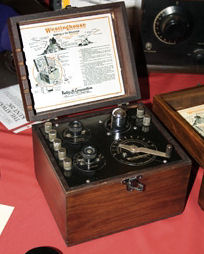
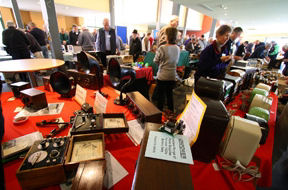
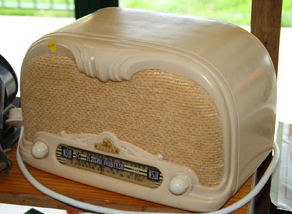

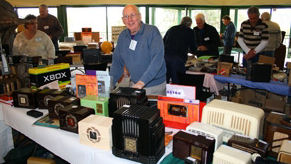

.jpg) personnel.
Airplane damage was limited to four deflated main landing gear tires and
ground down wheel rims. The main landing gear tires showed evidence of
being locked on touchdown. Ground damage was limited to minor grazing to
the runway's surface.
personnel.
Airplane damage was limited to four deflated main landing gear tires and
ground down wheel rims. The main landing gear tires showed evidence of
being locked on touchdown. Ground damage was limited to minor grazing to
the runway's surface.
